Please login or click here to join.
Forgot Password? Click Here to reset pasword
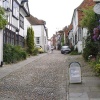 | 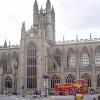 | 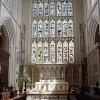 | 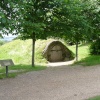 | 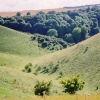 | 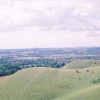 |
| Edward Lever Posts: 734 Joined: 22nd Dec 2005 Location: UK | quotePosted at 09:05 on 9th June 2013 Until recently, full-frame DSLRs were the preserve of the enthusiastic and wealthy amateur, and were beyond the reach of the casual snapper. Full-frame DSLRs are now becoming cheaper, and second-hand prices are coming down, and are within the reach of more people. For example, I recently bought a second-hand Canon 5D (which came out in 2006) for about one sixth of its original price ie now cheaper than a brand-new entry-level crop sensor DSLR. Even though the original 5D (Mark I) is seven years old now, I think it knocks spots off a crop sensor camera in terms of image quality, although it does not have the 'live view' or movie capability which the newer cameras have. There are other issues to be considered of course, such as weight and the need to use appropriate lenses. For the older camera user, this is not a problem since the older lenses designed for film SLRs normally work fine on full-frame DSLRs. |
| Rod Burkey Posts: 554 Joined: 2nd Sep 2008 Location: UK | quotePosted at 10:41 on 9th June 2013 I am tempted to dunk a toe into the world of full frame. However, I do often blow up my images to A3 and they look pretty good from my 12 mp Nikon D300. My old 6mp D70 still functions and even that poduces good A4 prints and the odd 20x16 incher. I do realize that the bigger sensor allows for much more cropping and, of course better overall quality when enlarged. Large images though do need to be viewed from a step back or two anyway to be appreciated fully. So, all in all I find myself on the horns of a dilemma and will seek solace in a darkened room.
|
| Edward Lever Posts: 734 Joined: 22nd Dec 2005 Location: UK | quotePosted at 11:26 on 9th June 2013 I think the most immediate effect of the larger sensor is much lower noise. It is all down to the basic physics of photon to electron conversion. The larger area of the individual photo cells on a full-frame sensor and more photons falling on them must mean lower noise. The relentless pursuit of more megapixels in itself does not always lead to better quality, as it means having more densely packed receptors. I would think 12 mp is more than adequate for most purposes. The old Canon 5D is only 12.8 mp, but in my opinion gives a 'cleaner' image than the more recent crop-sensor Canon DSLRs, which have higher megapixel ratings. The other bonus of full-frame is that your wide-angle lenses do not become 'narrowed' as they would be on a crop-sensor camera. Good luck in the darkened room, you never know where it may lead you. Edited by: Edward Lever at:9th June 2013 11:41 |
| Rod Burkey Posts: 554 Joined: 2nd Sep 2008 Location: UK | quotePosted at 20:05 on 9th June 2013 Have just come out into the light again, and very nice it all is too! The ultimate aim of a photographer is to create an image of worth at the very least. The subject, and how it is "seen" by the taker comes first. In the days of film we had a lot of options and could choose. Now, ISO and sensor size is the thing plus a host of post editing options. Anybody else out there with a view of sensor size?
|
Mark Stace Posts: 17 Joined: 4th Apr 2012 Location: England | quotePosted at 20:19 on 9th June 2013 I have done hours if not days of research on this subject and it comes down to how much you want to spend on a system. There is no doubt in my mind that a full frame sensor is better if directly compared. Lets face it if FF cameras were the same price as crop sensor we would not be having this debate. That said my crop Nikon with the right glass (expensive) knocks out some amazing poster sized prints which I normally have white wall do for me. Crop does have advantages though, and how many print very large very often? I think if you can afford FF and top glass then you should go for it, I though cannot afford the cost at the moment. I have seen some stunning photo's on this site taken with very average gear, and seen some awful stuff elswhere taken with photographers with a lot of money and no skill what so ever, which Rod has kind of said already. Go get that FF but dont skimp on the glass or you may well as not bothered. |
| Dave John Posts: 22335 Joined: 27th Feb 2011 Location: England | quotePosted at 20:23 on 9th June 2013 I've used one of my mates 5Ds and would swop my 500D for a 5D tomorrow. The quality of the images is certainly better although it would mean changing a lenses as well..... the Sigma 10-20 and 17-50 will not work on the 5D. That is something else that must be considered when changing up to 'full frame' censor. Also batteries and battery packs are all different. It is called 'full frame' because the sensor is the same size as a 35mm neg. |
| Edward Lever Posts: 734 Joined: 22nd Dec 2005 Location: UK | quotePosted at 22:37 on 9th June 2013 The argument about crop versus full-frame is certainly interesting, and there are pros and cons on both sides. I have used both types, Canon 20D, 50D (crop) and Canon 5D Mk I (full-frame). The batteries, leads and memory cards are identical for all these cameras, which meant I could move seamlessly to the 5D. I could only afford to move to the 5D Mk I when the second-hand price fell to around £400 - £500. The other advantage of the full-frame camera, which I did not mention previously, is the huge bright view-finder which took me back to film SLR days. As regards lenses, if you think at some time in the future you might go full-frame, do not buy any more lenses designed for crop sensors, or be prepared to trade them in as I did. |
| Paul Hilton Posts: 2605 Joined: 21st Nov 2004 Location: UK | quotePosted at 14:07 on 12th June 2013 I went full frame in 2008 with Nikon's D3 ( new in mid 2007 at £3400; not that you could actually buy one in the UK without going on a waiting list) and has been my best camera all round and will never trade it in. It has 12 meg sensor. But compared to my 12 meg APS-C D300, their specs are very different. You can use DX lenses on it, but that reduces the size to 5 megs though the 1.5 magnification isn't there. It also has a manually selected 5 x 4 aspect ratio option ( from its 3x2 normal) which reduces it to 10 megs. It'll also take the old Nikkor AI/AIS lenses mostly, after you tell it the focal length and max. aperture of the lens. It's bright view finder, especially so using the new F2.8 lenses that started to come out from Nikon for it, is 100%. Most of these early full frame cameras were mostly on flagship pro models with specs and prices to match--a Canon 1Ds MKII I recently traded in was £6000 in 2004 when the model came out. The dealer put mine in the window at £799; boxed complete, 9K actuations and someone soon snapped it up. I'd lost a few hundred £'s over 3 years on it. If it wasn't for its antiquated user-interface, I'd have kept it. As for lenses, the 70-200 2.8 VRII I spent ages saving up for to go on the D3, I use more on the D300 as an effective 105-300mm 2.8, though I have 3rd party lenses that also work well with the D3. The 24-70 2.8 lens is by far the most often used, or on my Canon cameras, their EF 28-135mm which works well on full frame without costing a fortune. |
| Paul Hilton Posts: 2605 Joined: 21st Nov 2004 Location: UK | quotePosted at 00:29 on 13th June 2013 Another consideration is how the lenses are working with the two ( generally) sensor sizes in relation to depth of field. For a given aperture and image size in the view finder, the full frame camera will have less DoF than the crop sensor one. Depending on your subject, this can work for you or against you and can also indirectly start to affect your choice of ISO setting, notably when light levels get lower or if you want to use differential focusing or not, put distracting backgrounds out of focus, and so forth. |
| Edward Lever Posts: 734 Joined: 22nd Dec 2005 Location: UK | quotePosted at 08:58 on 13th June 2013 I agree, Paul, that there are pros and cons for each type of sensor. I think it would be very useful to have two DSLRs, one with a full-frame sensor and the other with a crop sensor, to capitalise on the respective features of both. Unfortunately, the luxury of two camera bodies is something I can only aspire to, although I might be tempted as second-hand prices fall still further. For me, the most glaring disadvantage of the full-frame DSLRs is that they are not really rapid enough (in terms of frames per second) for sports photography. Most crop sensor DSLRs are speedier in this respect. I guess the problem with full-frame DSLRs is that the mirror is quite big and there is a limit to how fast it can move. Maybe the Sony translucent (pellucid) mirror system is the way to go to avoid swinging the mirror. To confuse things further, some of the Canon professional DSLRs (ie Canon 1D) have a fast frame rate of 10 fps and use an APS-H sensor (1.3X crop factor), a sort of half way house between APS-C and full-frame. Your Canon 1Ds with its full-frame sensor was not so speedy but was no doubt excellent for portraits, landscapes, weddings etc. Edited by: Edward Lever at:13th June 2013 11:59 |